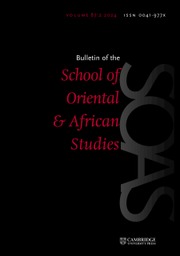Article contents
Imagery in Nģok Dinka Cattle-Names
Published online by Cambridge University Press: 24 December 2009
Extract
The Nilotes refer to their cattle in a number of ways, and one of these is by colour or interrelation of colours which are associated in their minds with some animal or bird or reptile. Their cattle are thus called by colour-analogy crocodile cow, fish eagle cow, leopard cow, and so on. The Dinka go even farther and make a double analogy in referring to their cattle by terms which suggest some activity associated with, or some attribute of, the creature that displays similar colouring to the cattle.
Information
- Type
- Papers Contributed
- Information
- Copyright
- Copyright © School of Oriental and African Studies 1934
References
C. G., and Seligman, B. Z., Pagan Tribes of the Nilotic Sudan, 1932, pp. 169–170.Google Scholar
1 This particle is given throughout as ma, though it may often be pronounced me or mi.
2 Archdeacon Shaw provides (in Bor Dinka) an alternative name, alang wer = swallower of the river, referring presumably to the same bird.
3 According to Stigand (A Nuer-English Vocabulary, 1923, p. 14) this is a “fish shaped like a fat conger eel”.Google Scholar
1 A suggested translation of bu wut is “tramples the cattle-kraal”, which might very well apply to the elephant.
2 According to Stigand (id., p. 21) this is the tree cobra.
3 Stigand (id., p. 16) gives “kěr, rail; brown rail, with white neck, which walks on floating vegetation” in his Nuer vocabulary. The Dinka term for this bird is unknown.
1 Another instance of this probable persistence of the old word in cattle-names may be noted under No. 2 (mior majaak, N. thak ma jaak), where the present Nuer word for pelican is bong.
1 An alternative name in Bor Dinka, according to Archdeacon Shaw, is adier kwec = covered in scales, referring to the fish.
1 According to Archdeacon Shaw ma kwe and ma yom refer in the Bor dialect to cattle with different markings, the name given to an owner of a ma yom being arei gor “spoil the waterlily”.
- 5
- Cited by

